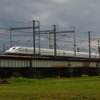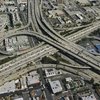In Japanese culture, climbing to the summit of Mount Fuji is a feat that every self-respecting citizen should accomplish once in their lifetime. For those who have yet to do so, the 12,355-foot sacred volcano serves as a constant reminder of a road not taken, looming over the surrounding plains and visible on a clear day from Yokohama, 51 miles away. Getting there from Japan’s second largest city is relatively easy, but timing is essential. Trails are open and visibility is best during July and August. Try to travel on a weekday as the mountain is crammed with hikers on weekends.
Fuji Basics
Although the mountain’s distinctive snow-capped cone is visible for much of the journey from Yokohama, trails begin at the so-called Fifth Station at the foot of the mountain, a terminus served by transport only during the summer months. Otherwise, trains and buses stop farther back at Kawaguchiko Station, named after the lake of the same name. Frommer’s warns that the area around Kawaguchiko Station can be hectic and touristy, but don’t overlook a trip around the lakes and the famed hot springs.
Regular Buses
Numerous buses leave regularly for Mount Fuji. Seats on the comfortable, luxury coaches must be booked in advance, up to a month ahead of time. From Yokohama Station, a service runs daily at 7:30 a.m., 12:20 p.m. and 6:00 p.m. to Kawaguchiko Station, reaching it in two and a half hours. An additional bus service from Kawaguchiko accesses the Fifth Station between July and September. Alternatively, take the subway to Tokyo -- around 25 minutes away -- and catch the bus service from Shinjuku Station direct to the Fifth Station, with six buses daily during the summer, arriving two and half hours later.
Slick Trains
Two options present themselves for travel on Japanese railways, noted for fast, punctual and comfortable trains. From Yokohama, take the Japan Rail Yokohama Line to Hachioji, just under an hour away, then the Chuo Line to Otsuki, 45 minutes away. From Otsuki, the Fujikyuko Line reaches Kawaguchiko in 50 minutes. Alternatively, catch the 25-minute subway train to Tokyo and hook up with the express service from Shinjuku Station, which reaches Otsuki in around 70 minutes. In both cases, bear in mind that the Japan Rail Pass and JR East Pass are not valid for the leg between Otsuki and Kawaguchiko.
Scenic Drive
Taking the road between Yokohama and Fuji is relatively simple, other than the need to pay sporadic tolls. Pick up the Tomei Expressway outside Yokohama. Drive in the direction of Nagoya, taking the Gotemba Interchange after 35 miles. From the interchange, Route 138 leads directly to Fujisan, a little over 3 miles away. Follow the signs for the Subaru Tollway, which finishes at the Fifth Station. In peak summer months, the tollway is closed to private vehicles, so visitors must take the shuttle bus. In winter, the tollway is open to private vehicles unless there is heavy snowfall.
References
Photo Credits
- SeanPavonePhoto/iStock/Getty Images




